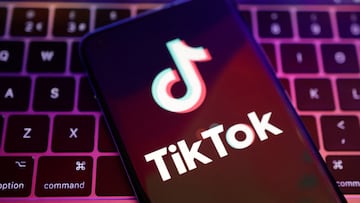Politicians are trying to connect with young people on TikTok - Is it working or backfiring?
With the US midterm elections just months away, candidates are pulling out all the stops to atract voters. Is the growth of TikTok a good opportunity?

Despite threats from the US government about security risks, TikTok continues to surge in popularity. The most downloaded app of 2020 and 2021, the social media site features bite-size videos from dancing to singing to comedy with everything between and outside that. A relatively new phenomenon, at least in US politics, has been the taking to TikTok for politicians.
Elections are near and candidates are doing all they can. One, Rhode Island state Senator Tiara Mack joined a twerking trend to raise her profile in an unusual way. For young politicians, Mack is only 28, the platform allows a quick connection with a younger audience than would be traditionally associated with election campaigning.
While some Republicans have got in on the act, the vast majority of US politicians engaging with TikTok tend to be from the Democrats, according to the Los Angeles Times. The Democratic Party has its own account, showing the party’s commitment to TikTok and the influence staffers believe it could have. Indeed, it is a huge market to tap with more than 138 million users in the US.
How much impact will these political adverts have?
Hard data for their importance is impossible to calculate, but some information could point to problems that TikTok videos have when they are targeted toward the electorate. This is due to the nature of the app and who uses it the most.
With more than 70 percent of Tikok users being younger than 34, the impact these ads have on voting could be limited due to voting habits. Voting in the youngest age bracket of 18 to 24 years old in the 2020 election was just 51.4 percent according to the census, the lowest of any age group. This is also the largest age group using TikTok.
Coupled with this, midterm elections tend to have lower turnouts compared to presidential elections. While overall turnout for the 2016 and 2018 elections was 59.2 and 66.9 percent respectively, the 2018 midterms sandwiched between the two mustered just a 53.4 percent turnout. Even this was the highest turnout for forty years.
However, this information on voter turnout could provide some evidence as to why there has been such a push from the Democrats on TikTok.
So why are politicans using TikTok adverts?
Whether or not specific Democrat candidates get millions of views or not seems to be besides the point. Getting younger voters invested in politics and their candidates by any means necessary could be part of a canny political strategy in the build-up to November.
Voter apathy is always dangerous for the incumbent party in midterms. With a multitude of problems assailing the president and his levers of power, the House and the Senate, the Democrats need to push for an unprecedented voter turnout amongst the young if they are to stave off a big defeat come November. In 78 of the last 100 polls, aggregated by FiveThirtyEight, Republicans will be taking the House of Representatives away from Democrats. If they were to lose this key battleground then passing legislation will get even more difficult than it has been for the last two years.
Compared to the Senate, voting on the House gives young voters plenty more opportunity to vote for candidates that share their beliefs on their most important issues. The Senate has an average age of 64 and the idea that they can be in tune with young voter demands seems far-fetched.
Is apathy the primary reason young voters don’t vote?
Targeted social media videos from specific candidates is all well and good, but if the strategy is tackling apathy then perhaps the Democrat party could be on a wild goose chase.
In research collected in the book “Making Young Voters,” authors John Holbein and D. Sunshine Hillygus found that “the number of young people who express an interest in elections (76 percent), care who is president (74 percent), have interest in public affairs (85 percent), and intend to vote (83 percent) is especially high.”
While voter apathy does strike the older age groups, there are plenty of other barriers to youth voting that are more significant. With no national holiday on election day, finding the time and resources to vote is difficult for every age group, but especially the young. According to CIRCLE, 52 percent needed to rearrange work or school to be able to vote. Nearly 40 percent of youth didn’t know where to vote and just a quarter knew they could vote by mail.
These problems are exacerbated by the Demographic make-up of America’s youth. Nearly 50 percent of all young people classed as an ethnic minority, usually Democrat voters except in some rare cases, which comes with a greater likelihood of an insecure economic situation. This makes access to all services more difficult, not least voting. Gerrymandering of voting districts further restricts voting power.
Rather than targeting voter apathy, Democrats may be better placed to use TikTok to educate young voters on how they can vote, rather than who they should vote for, if they want to hold on in the November midterms.






